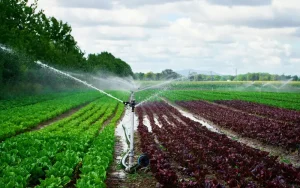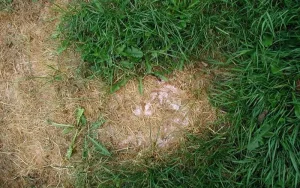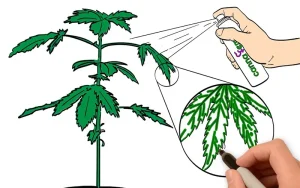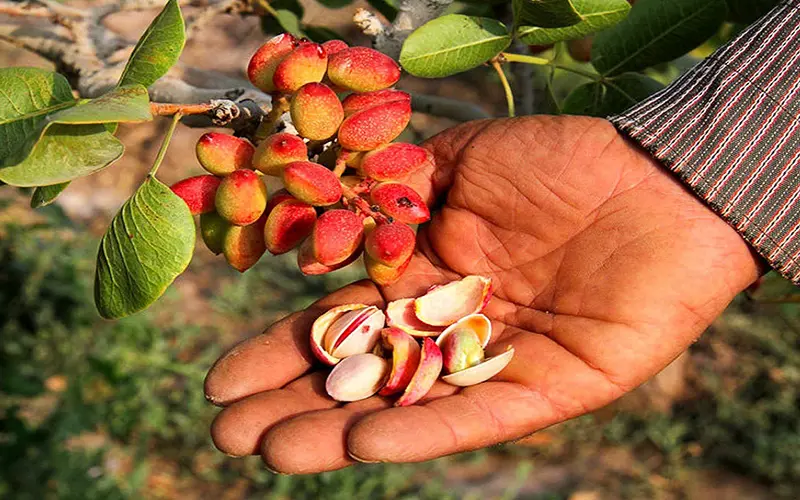Proper Fertilizer for Pistachio Trees ensures healthy growth, strong nut production, and long-lived trees. A well-timed nutrient plan addresses seasonal demands and prevents deficiencies that can stunt growth or reduce yields.
Why Use Fertilizer for Pistachio Trees?
Pistachio trees have high nutrient requirements once established. Applying Fertilizer for Pistachio Trees:
- Replenishes soil nutrients depleted by heavy nut production
- Encourages robust vegetative growth for supports and branches
- Improves nut quality by ensuring adequate nitrogen, phosphorus, and potassium
Nutrient Requirements
Primary Nutrients
- Nitrogen (N): Drives leaf and shoot growth
- Phosphorus (P): Supports root development and flowering
- Potassium (K): Boosts fruit size, shell integrity, and drought tolerance
When choosing Fertilizer for Pistachio Trees, look for an N–P–K ratio tailored to your orchard’s soil test results (common: 10-10-10 or 16-16-16).
Recommended Products: CK NPK Complex Fertilizers
Secondary Nutrients & Micronutrients
- Calcium & Magnesium: Strengthen cell walls
- Zinc & Iron: Prevent chlorosis and maintain green foliage
A balanced formulation or occasional foliar feed can supply these in small but critical amounts.
Seasonal Fertilizer Schedule
Planning Fertilizer for Pistachio Trees seasonally aligns nutrients with growth stages:
Early Spring (Bud Break)
- Apply nitrogen-rich fertilizer to fuel new shoot growth
- Broadcast ½ to 1 lb of actual N per tree, based on age
Recommended Products: Unique Fertilizers
Late Spring (Pre-Flowering)
- Side-dress with balanced N–P–K to promote bloom set
- Ensure soil moisture to help nutrient uptake
Summer (Nut Development)
- Light application of nitrogen to support filling
- Avoid excessive phosphorus, which can inhibit N uptake
Fall (Post-Harvest)
- Apply a balanced fertilizer to replenish what was removed in the crop
- Incorporate organic matter or compost to improve soil structure
Yearly Plan for Fertilizer for Pistachio Trees
A yearly cycle ensures consistency:
- Winter Soil Test: Adjust ratios for spring applications
- Spring Feeding: Nitrogen boost at bud break
- Mid-Year Check: Correct any emerging deficiencies
- Fall Replenishment: Prepare trees for dormancy
A well-timed Fertilizer for Pistachio Trees program prevents over- or under-feeding.
Recommended Products: CK R142-10-20-30 micros pistacho
Application Tips
- Water In Well: Always irrigate after granular applications.
- Avoid Leaf Burn: Keep granular fertilizer away from the trunk flare.
- Split Applications: Multiple smaller doses are better than one large dose.
- Monitor Tree Health: Yellowing leaves or stunted growth signal adjustment needs.
Organic vs. Synthetic Fertilizer Options
When selecting Fertilizer for Pistachio Trees, you can choose between organic materials (like composted manure or bone meal) and synthetic blends. Organic options release nutrients more slowly, improve soil structure, and support microbial life, while synthetic fertilizers provide precise N–P–K ratios for quick uptake. A mixed approach often offers both immediate nourishment and long‑term soil health.
Identifying and Correcting Nutrient Deficiencies
Regularly scout your orchard for signs of nutrient stress—yellowing leaves (nitrogen deficiency), stunted flowering (phosphorus lack), or leaf scorch (potassium shortfall). Once a deficiency is confirmed by soil or tissue testing, tailor your Fertilizer for Pistachio Trees application to correct the imbalance, using targeted foliar feeds or soil amendments as needed.
Environmental Considerations and Sustainable Practices
Over‑application of Fertilizer for Pistachio Trees can lead to nutrient runoff and groundwater contamination. To minimize impact, employ split applications, use cover crops in off‑seasons to capture excess nutrients, and maintain buffer zones near water sources. Integrating these practices ensures high yields while protecting the surrounding ecosystem.
For further reading, check out:
Conclusion
Implementing a consistent Fertilizer for Pistachio Trees schedule tailored to seasonal growth stages maximizes yield and tree health. By understanding your soil’s needs, following a spring-to-fall plan, and fine-tuning with soil tests, you’ll ensure your pistachio orchard thrives with the right Fertilizer for Pistachio Trees year after year.
FAQs
1. When is the best time to apply fertilizer for pistachio trees?
Early spring at bud break and again in late spring before flowering are ideal. A light summer top‑dress and a post‑harvest fall application complete the annual cycle.
2. How much fertilizer for pistachio trees should I use per application?
Aim for ½ to 1 lb of actual nitrogen per tree in spring, adjusted by tree age and soil test. Split that into two or three smaller doses rather than one large feeding.
3. What are signs I’m over‑ or under‑fertilizing my pistachios?
Yellowing or sparse foliage often indicates under‑feeding, while excessive vegetative growth with poor nut set suggests over‑fertilization. Regular soil tests help keep your fertilizer levels balanced.









